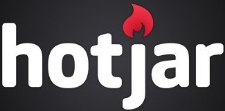Author Archives: General Chicken
Author Archives: General Chicken
 Hotjar offers free website analytics so they have a challenging mission: handle hundreds of millions of requests per day from mostly free users. Marc von Brockdorff, Co-Founder & Director of Engineering at Hotjar, summarized the lessons they've learned in: 9 Lessons Learned Scaling Hotjar's Tech Architecture To Handle 21,875,000 Requests Per Hour.
Hotjar offers free website analytics so they have a challenging mission: handle hundreds of millions of requests per day from mostly free users. Marc von Brockdorff, Co-Founder & Director of Engineering at Hotjar, summarized the lessons they've learned in: 9 Lessons Learned Scaling Hotjar's Tech Architecture To Handle 21,875,000 Requests Per Hour.
In response to the criticism their architecture looks like a hot mess, Erik Näslund, Chief Architect at Hotjar, gives the highlights of their architecture:

Which cloud should you use? It may depend on what you need to do with it. What Zach Bjornson needs to do is process large amounts scientific data as fast as possible, which means reading data into memory as fast as possible. So, he made benchmark using Google's new multi-cloud PerfKitBenchmarker, to figure out which cloud was best for the job.
The results are in a very detailed article: AWS S3 vs Google Cloud vs Azure: Cloud Storage Performance. Feel free to datamine the results for more insights, but overall his conclusions are:

Achieving very low latencies takes special engineering, but if you are a SaaS company latencies of a few hundred milliseconds are possible for complex business logic using standard technologies like load balancers, queues, JVMs, and rest APIs.
Itai Frenkel, a software engineer at Forter, which provides a Fraud Prevention Decision as a Service, shows how in an excellent article: 9.5 Low Latency Decision as a Service Design Patterns.
While any article on latency will have some familiar suggestions, Itai goes into some new territory you can really learn from. The full article is rich with detail, so you'll want to read it, but here's a short gloss:

Instagram has always been generous in sharing their accumulated wisdom. Just take a look at the Related Articles section of this post to see how generous.
The tradition continues. Mike Krieger, Instagram co-founder, wrote a really good article on lessons learned from milestones achieved during Five Years of Building Instagram. Here's a summary of the lessons, but the article goes into much more of the connective tissue and is well worth reading.

Endings are often a time for reflection and from reflection often comes wisdom. That is the case for Kellan Elliott-McCrea, who recently announced he was leaving his job after five successful years as the CTO of Etsy. Kellan wrote a rather remarkable going away post: Five years, building a culture, and handing it off, brimming with both insight and thoughtful commentary.
This post is just a short gloss of the major points. He goes into more depth on each point, so please read his post.
The Five Lessons:
The Eight Industry Changes: